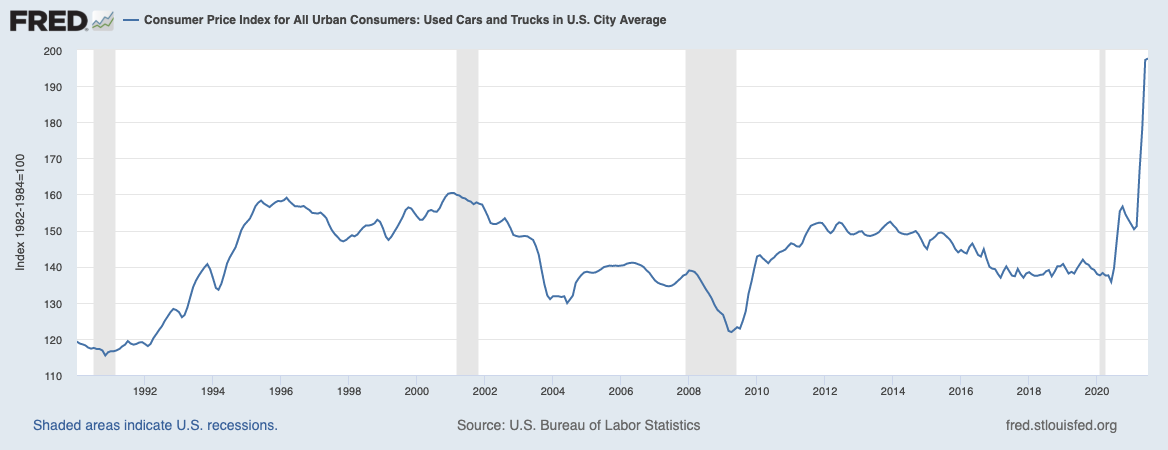Pricing Strategy Lessons from Retailers Fighting Inflationary Pressures
Inflation has been a hot topic in the pandemic economy. Beyond base effects (the artificially low prices produced by a shutdown economy), in many industries the prices for materials, goods, and even labor have soared. Suddenly, businesses need solid pricing strategies not only to earn attractive profits but also just to stay solvent. Marketplace recently ran a segment called “How do retailers decide when to raise prices?” The broadcast featured pricing strategy lessons from retailers trying to cope in today’s inflationary environment. Every small business can learn from these stories.
Pricing in a high-end, hyper-competitive market
- Challenge: High-end restauranteur James Mallios faces broad-based and significant increases in input costs in New York City.
- Problem: “Every restaurateur is always skittish about raising prices because they’re afraid of the customer reaction. But economically, like, by the book, we should have raised everything 20% two months ago.” Broad-based price increases prevent substitution strategies like replacing menu items. Lower quality supplies cost the same as higher quality supplies before inflation took off.
- Business owner’s solution: So far, Mallios has raised menu prices in just one restaurant.
- Ahan Analytics recommendation: The higher prices at a single restaurant sounds like a small experiment for a pricing strategy. Run more price experiments. Since higher-end diners tend to appreciate quality over price (low price elasticity of demand), small price increases should be tolerable. In turn, competitors may get the signal that the market can tolerate higher prices. Since all businesses are facing the same pricing pressures, the end-game of higher menu prices is nearly inevitable. Try adding more value along with the price increases like an extra side or additional combination offerings.
Pricing for specialty products
- Challenge: Soy candle shop, Handmade Habitat, faces soaring material costs.
- Problem: Fear of losing business from price increases.
- Business owner’s solution: Amina Ahmad maintains a spreadsheet that tracks all her costs and signaled the need for price hikes. She increased prices in the off-season ahead of the critically important holiday season. Fortunately, Handmade Habitat did not lose business.
- Ahan Analytics recommendation: I like Ahamd’s pricing strategy, so I offer observations here. I love the detailed spreadsheet! Every small business owner needs to track costs this carefully. Pricing well ahead of a seasonal jump in demand provides time to adjust with smaller demand. The method is similar to a small experiment. A good response ahead of the holiday season can build confidence in the strategy or provide key lessons in time for the surge in demand.
Pricing for seafood products
- Challenge and problem: Increasing cost of lobster at the dock.
- Business owner’s solution: Get Maine Lobster responded to a doubling in the price of lobster with, for example, a 40% increase in the price of a lobster roll kit: “…that didn’t really impact sales that much.”
- Ahan Analytics recommendation: I am not surprised by the suggestion of a low price elasticity of demand for a high-end treat like lobster. The market for lobster is likely competitive enough that all producers of lobster-based foods are facing the exact same pressure. I would continue to add small price increases to recover additional hikes in input costs. There is a LOT of room between 40% and 100%!
Pricing for on-line sales of accessories
- Challenge: Increasing material costs.
- Problem: Small (on-line) businesses are unable to use substitution strategies that feature lower quality or reduced quantity to account for higher prices.
- Business owner’s solution: “Whenever we increase prices, I’ve always tried to be sure that I’m not just offering people the exact same thing at a higher price…There’s nicer hardware, or there’s a nicer zipper, or there’s a nicer leather handle, or there’s more value added.”
- Ahan Analytics recommendation: I like the solution here, so I offer some observations. Value-add pricing is a great anchoring pricing strategy. Instead of focusing on the higher prices, the customer focuses on the added value in the product. Now the consumer equates the higher price with getting something extra, a bonus even.
Macro-Economic Considerations
Monetary and fiscal policy pumped a lot of money and support into the economy to ease the pain of shutting down the economy over long stretches of time. As the economy rebounds, various parts of the economy are not working as well as they once did. As a result, supply chains are challenged, material shortages abound, labor shortages are forcing wages higher in some industries, and consumers flush with savings and pent-up demand have unleashed in concentrated bursts. All combined, these market dynamics have generated some serious disruptions and price disconnects.
For example, the price of user cars soared in two bursts. The first run-up was in response to consumers switching out of public transportation for private transportation out of fear of communal spread of the COVID-19 virus. A second and even larger surge started in April after vaccinations provided a great re-opening of the economy and the return to work for many Americans.

The road ahead will surely provide additional surprises. Small businesses must maintain dynamic pricing strategies to maintain effective operations. Contact Ahan Analytics to help you navigate these inflationary times.


Awesome content and organization on your website dude, very useful to me and everyone.